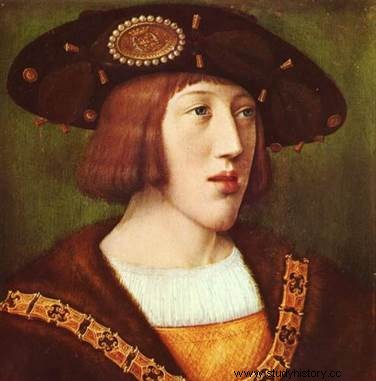 Charles V (1500-1558) is famous for being one of the most powerful rulers in Europe, ruling over the Netherlands, Spain and the Holy Roman Empire. Master of an immense empire on which “the sun never set”, the story of Charles V unlike any other. Not only was he the first monarch to have a colonial empire located on the new Amerindian continent, but he was also the lucky beneficiary of a cascade of inheritances which placed him at the head of an immense domain in Europe. Throughout his reign, Charles V had to fight against France during the Italian wars, against the Ottoman Empire which invaded Eastern Europe and against the Protestantism which emerged in Germany.
Charles V (1500-1558) is famous for being one of the most powerful rulers in Europe, ruling over the Netherlands, Spain and the Holy Roman Empire. Master of an immense empire on which “the sun never set”, the story of Charles V unlike any other. Not only was he the first monarch to have a colonial empire located on the new Amerindian continent, but he was also the lucky beneficiary of a cascade of inheritances which placed him at the head of an immense domain in Europe. Throughout his reign, Charles V had to fight against France during the Italian wars, against the Ottoman Empire which invaded Eastern Europe and against the Protestantism which emerged in Germany.
The legacies of Charles V
The future Charles V was born in 1500 in Ghent in Flanders, little spoiled by Mother Nature, but with a golden spoon in his mouth. French-speaking, he was steeped in the Burgundian tradition of the wealthy estates of his father, the Duke of Burgundy Philippe le Beau, from whom he inherited in 1506 – Belgium, Artois, Luxembourg, southern Holland, Franche-Comté. His maternal grandparents are none other than Isabella of Castile and Ferdinand of Aragon, the "Catholic kings", crowned with the prestige of the end of the reconquest of Spain from the Moors, who reign over the Mediterranean and preside over the conquest of the new world initiated by Christopher Columbus in 1492. Charles Quint inherited it definitively in 1518, taking the name of Charles I of Spain. Having dismissed his depressed mother Jeanne la Folle in passing, he also met with some resistance from Hispanics who did not see the arrival of a Burgundian sovereign with a good eye.
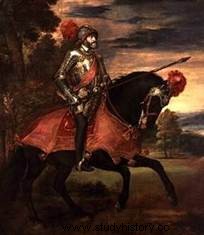 Icing on the cake, he became, on the death of his grandfather Emperor Maximilian I, Archduke of Austria, which opened the way for him to succeed to the crown of the Holy Roman Empire, a crown which he won in a hard fight in 1519 by generously buying the prince electors to be elected emperor. His competitors Francis I and Henry VIII had clearly perceived the danger represented for the balance in Europe by this too well-born Charles, and they left Charles little respite.
Icing on the cake, he became, on the death of his grandfather Emperor Maximilian I, Archduke of Austria, which opened the way for him to succeed to the crown of the Holy Roman Empire, a crown which he won in a hard fight in 1519 by generously buying the prince electors to be elected emperor. His competitors Francis I and Henry VIII had clearly perceived the danger represented for the balance in Europe by this too well-born Charles, and they left Charles little respite.
Emperor of the Holy Roman Empire
Unquestionably the most powerful sovereign of Christendom, Charles V then dominated a set of territories including the Spanish kingdoms of Aragon and Castile, the Italian states of Naples, Sicily and Sardinia, the territories conquered in America and Africa, the Netherlands, Flanders, Artois, Alsace, Franche-Comté, as well as all the possessions of the Habsburgs. Faced with this new Habsburg power, the French sovereign feared for his encircled lands.
In fact, the unity of such an empire is only theoretical, because Charles, whose education is of French and Catholic tradition, remains a foreigner in Spain, and more in Germany. This difficulty in uniting under the same name such vast possessions is quickly understood by François I, who then seeks to exploit the weakness of Charles V.
Charles V versus Francis I
Charles V, who married Isabella of Portugal in 1526, rules the New World as well as the Old. His possessions and his origins make him above all a European monarch. It is said of him that he spoke French to the men, Italian to the women, Spanish to God and German to his horse. Crowned Emperor in 1520 in Aix la Chapelle, thinking on the one hand of Charlemagne and on the other of his Italian sailors and his Spanish conquistadors attacking the Americas, he probably dreamed of a possible universal empire, whose base would be the European continent. Its motto – Always further – is commensurate with its ambition. An ambition that will quickly be curbed by the many thorns that will come to plant themselves in his dream.
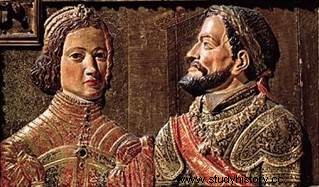 There is to begin with this cactus planted in the middle of his domain named François Ier at the head of the kingdom of France , which he must circumvent in exhausting journeys by land and sea to visit his empire or circulate his armies. Between the French sovereign surrounded on all sides and the ambitious Emperor engages in a life-and-death struggle that will last four decades. Despite some military victories -Pavia, 1525-, the stubborn king of France did not give in despite the signing of the Treaty of Madrid (1526), and the two parties exhausted themselves in a series of wars which would give no lasting advantage to France. one or the other.
There is to begin with this cactus planted in the middle of his domain named François Ier at the head of the kingdom of France , which he must circumvent in exhausting journeys by land and sea to visit his empire or circulate his armies. Between the French sovereign surrounded on all sides and the ambitious Emperor engages in a life-and-death struggle that will last four decades. Despite some military victories -Pavia, 1525-, the stubborn king of France did not give in despite the signing of the Treaty of Madrid (1526), and the two parties exhausted themselves in a series of wars which would give no lasting advantage to France. one or the other.
Francis I did not budge and took Charles V from the rear by allying himself with Sultan Suleiman the Magnificent, the latter dangerously threatening his Habsburg possessions by laying siege to Vienna (1529). Charles consoles himself by adding Bohemia, Milanese and Holland to his possessions, but fails in his attempts to establish himself in North Africa against the Turks. In 1529, a precarious peace (known as Peace of the Ladies) negotiated by Louise of Savoy representing the king of France and Marguerite of Austria for the emperor was signed in Cambrai.
Threats to the Empire
During each of the conflicts against France, Charles V sought to hasten peace in order to devote himself, in addition to the internal religious wars, to the defense of the Empire against the Ottoman threat. Indeed, Sultan Suleiman I, after subjugating the Balkan Peninsula, declared war on Hungary in 1526 and won the battle of Mohács the same year. Three years later, the Turks besieged Vienna. In 1535, the Genoese admiral Andrea Doria, in the service of Charles V, led an expedition to Africa, routed the Turks in Tunis and freed around 20,000 Christian slaves. In 1538, the Holy League was formed by Pope Paul III and the Republic of Venice. The alliance did not last and, in 1547, Ferdinand I, King of Bohemia and Hungary, brother of Charles V, had to sign a peace treaty with the Turks.
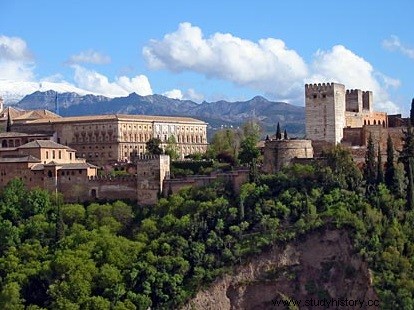 The other threat to the very unity of his empire is the religious reform that begins and progresses under his reign. Since 1517, the ideas of Martin Luther and then of Calvin have been spreading in Europe, which aim to profoundly change the practices and dogmas of the Church. The Reformation will find echoes among other things with the German princes, who are all too happy to find a way to resist the Emperor who is constantly cutting back on “Germanic freedoms”. They united in 1529 in the League of Smalkald. Holder of the title of Holy Roman Emperor, Charles V, a devout Catholic, fought fiercely against the Reformation.
The other threat to the very unity of his empire is the religious reform that begins and progresses under his reign. Since 1517, the ideas of Martin Luther and then of Calvin have been spreading in Europe, which aim to profoundly change the practices and dogmas of the Church. The Reformation will find echoes among other things with the German princes, who are all too happy to find a way to resist the Emperor who is constantly cutting back on “Germanic freedoms”. They united in 1529 in the League of Smalkald. Holder of the title of Holy Roman Emperor, Charles V, a devout Catholic, fought fiercely against the Reformation.
Despite a military victory at Mülhberg (1547) over the rebellious Lutheran princes opportunely supported by Francis I, Charles V was powerless to circumcise the progress of reform in Germany, Switzerland and in the Nederlands. And this, especially since the papal authority was very weakened at that time, a weakening to which he himself contributed in his incessant struggles against France in Italy (sack of Rome in 1526 under the pontificate of Clement VII ).
Ultimately, during the reign of Charles V, only the Netherlands experienced a period of growth, largely due to the commercial boom of port cities such as Amsterdam and Antwerp . A political evolution is also taking shape, with the pragmatic sanction of 1549 which recognizes the existence of the Seventeen Provinces of the country as an “indivisible and indivisible” whole. During his reign, Charles V ruled his territories under the sign of humanism, with Erasmus, André Vesalius or Bruegel the Elder. The only dark spot in the country's development was a revolt, fomented by the French monarch, which broke out in 1539 in Ghent and was followed by harsh repression.
A difficult end of reign for Charles V
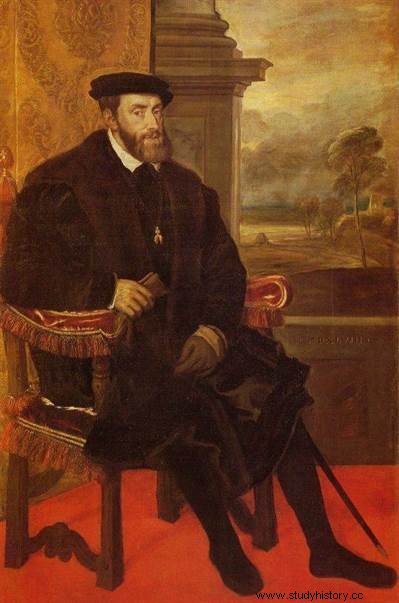 Little by little, Charles V saw his dream of a Christian Universal Empire evaporate. Despite the fabulous wealth that his ships bring back from the Americas, France prevents him from geographically unifying his empire, whose borders are threatened in the Balkans by the Turks, and he watches helplessly as the religious division that is taking hold in Europe . In 1555, tired and worn out by the incessant wars he had to wage on all fronts, ill and won over by bitterness, Charles V announced to the whole of Europe, amazed, his intention to abdicate.
Little by little, Charles V saw his dream of a Christian Universal Empire evaporate. Despite the fabulous wealth that his ships bring back from the Americas, France prevents him from geographically unifying his empire, whose borders are threatened in the Balkans by the Turks, and he watches helplessly as the religious division that is taking hold in Europe . In 1555, tired and worn out by the incessant wars he had to wage on all fronts, ill and won over by bitterness, Charles V announced to the whole of Europe, amazed, his intention to abdicate.
This is an extremely rare fact, the last precedent of which dates back to the Roman Emperor Diocletian. Lucid, he shares his immense empire between his brother Ferdinand and his son, the future King of Spain Philip II. Having left his mark on the 16th century, he retired from worldly affairs to the monastery of San Jerónimo de Yuste in Extremadura. He died there on September 21, 1558 of malaria, taking with him his dream...
For the record, Emperor Charles V was almost married in his youth to Renée of France, daughter of Louis XII and Anne of Brittany. We find ourselves dreaming of the destiny of Europe if, by chance of another happy inheritance, Charles V had added, thanks to this union, France to his collection of crowns...
Bibliography
- Charles V:The Ephemeral Empire of Jean-Michel Sallmann, Payot 2004.
- Charles Quint by Philippe Erlanger. Tempus, 2004.
- Charles V, biography of Pierre Chaunu. Fayard, 2000.
